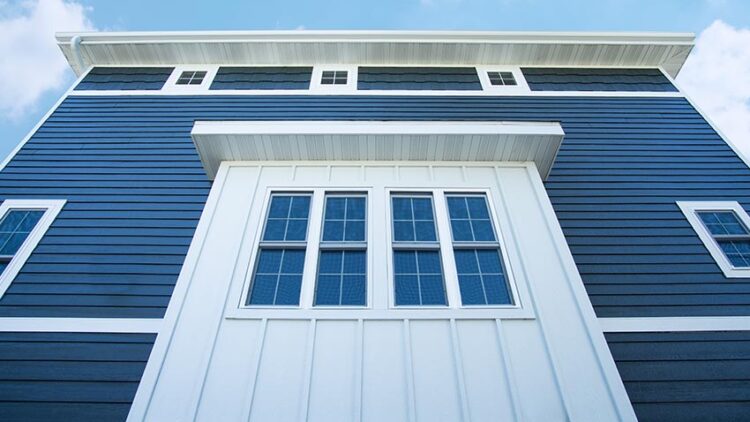Some clarity on window replacement options
Windows bring beauty, functionality and light into your home. Old windows bring drafts, frustration and bigger utility bills. So, time to replace them. But, with what? Because maybe that old single hung would be better as a new double hung. Or you’re thinking casement windows would be great, but can they be a problem for your neighbor’s house? So, let’s take a look through the glass at your options and what may be best for you.
Insert or total replacement (full frame)
What is the difference between the two?
Insert window replacement: These are installed within the existing frame. Only the old sash, hardware and covers are replaced. The benefits are they cost less than full frame replacements, are quicker to install and you can keep your existing interior/exterior trim. The limitations are you need to make sure your trim/frame are structurally sound, and you may see some slight reduction in light (inserts can take up a bit more light space).
NOTE: If choosing insert windows, you may need to pull off the trim to make sure the frame is properly insulated and sealed. If not, you’ll need to add insulation and seal where needed. Otherwise, you’ll lose some of the energy efficiencies of the new window.
Full frame window replacement: These replace your entire existing window. Completely removing it down to the studs. The benefits are that you or your contractor can fully inspect insulation/sealing and any water damage, then repair it to ensure maximum energy efficiency. Full frame windows also offer the ability to replace an existing window with a new size or new style, and since they are a complete unit they can offer better aesthetics. The limitations are that they typically cost more, take longer to install and require removal of interior/exterior trim (and possibly siding).
NOTE: Typically, a full frame replacement is needed when you either have damaged frames (which can occur over the years), have vinyl frames, or you are planning a significant remodel.
Single hung or double hung:
What’s the difference you ask? Well, there are several. First and foremost, a single hung window has the top sash fixed in place (thus, only the bottom sash can open). A double hung (as you can guess) has the flexibility to open both top and bottom (even at the same time).
Other key differences between the two include:
Single hung:
- Generally more energy efficient (fixed top sash)
- Typically more affordable
- Offers less ventilation
- Can be more difficult to clean/maintain
Double hung:
- Offers more ventilation
- Safer for homes with small children (can open just the top sash for ventilation)
- Easier to clean/maintain
- Typically cost more
NOTE: Single hung windows have been the most popular simply because they’ve been around longer. And older home/historic remodels will tend to stay with single hung to maintain the style of the home. But double hung windows are gaining in popularity (especially with new homes) and are now available in a wider variety of styles and options.
The case for casement windows.
A casement window is one where the sash is hinged on the side and opens either to the left or the right. Some you can manually push open and pull to close. But most have a crank. These are great options in a kitchen or bathroom where cabinets or sinks/bathtubs make it more difficult to get to the upper areas of a window.
Other advantages:
- Can offer large, interrupted expanse of glass and ventilation
- More airtight when closed versus single hung/double hung windows
- Screens stay cleaner since they are located on the inside of the glass
A disadvantage to consider:
If you are close to your neighbor’s house and they have vinyl siding, a casement window using Low-E glass (low emittance) can cause some damage. How? Low-E glass has a coating that suppresses radiative heat flow and since the screen is on the inside of the window there is no diffusion of the sun’s rays. Therefore, the reflective heat toward your neighbor’s house from the glass is intensified and can cause vinyl siding to distort (or melt), especially if the window faces south or southwest and your neighbor’s house is within in 20 feet. Consult with your contractor or talk to us about what the risk may be using casement windows and how you can prevent vinyl siding distortion if you choose to install a casement window that receives significant sunlight.
Self-cleaning windows…really?
Yes. These windows have a very thin outer coating of titanium dioxide. Which, for those who don’t have a PhD in Chemistry, simply means that it keeps the glass clean of organic (carbon-based) dirt using both sunlight and rain. However, there are some drawbacks. It’s usually more expensive than regular glass. The cleaning process happens continually over time (the end result isn’t quite as nice as a freshly, hand-scrubbed window but also not as dirty as one that remains uncleaned). You still need to clean the inside of the window (but that’s much easier than the outside). And not every window manufacturer offers it. Although, all said the advantages look to overcome the downsides—especially if you despise cleaning windows.
Good thing you have options.
A lot of options. But at the end of the day, the choice really comes down to your personally aesthetic and style. To learn more, stop by your local Chase Lumber dealer and talk to one of our window experts about your project.

